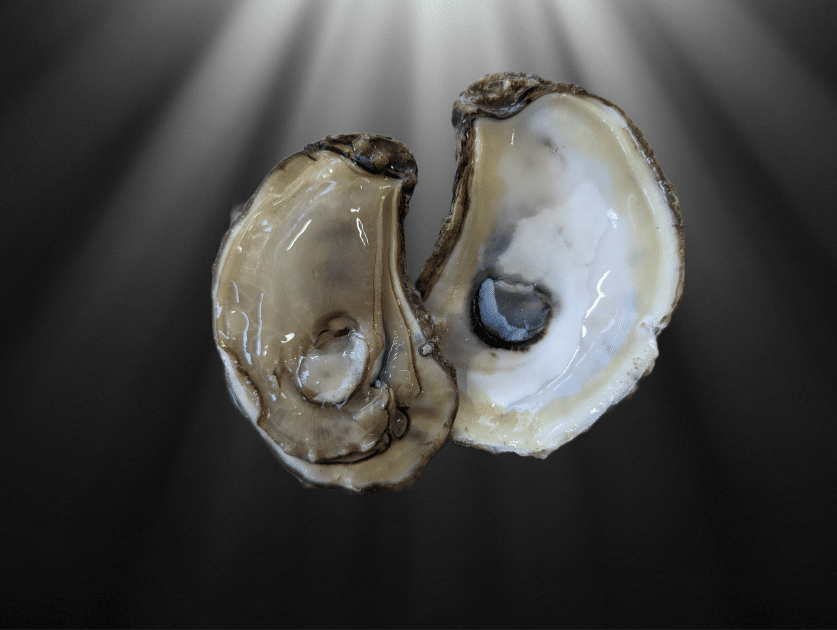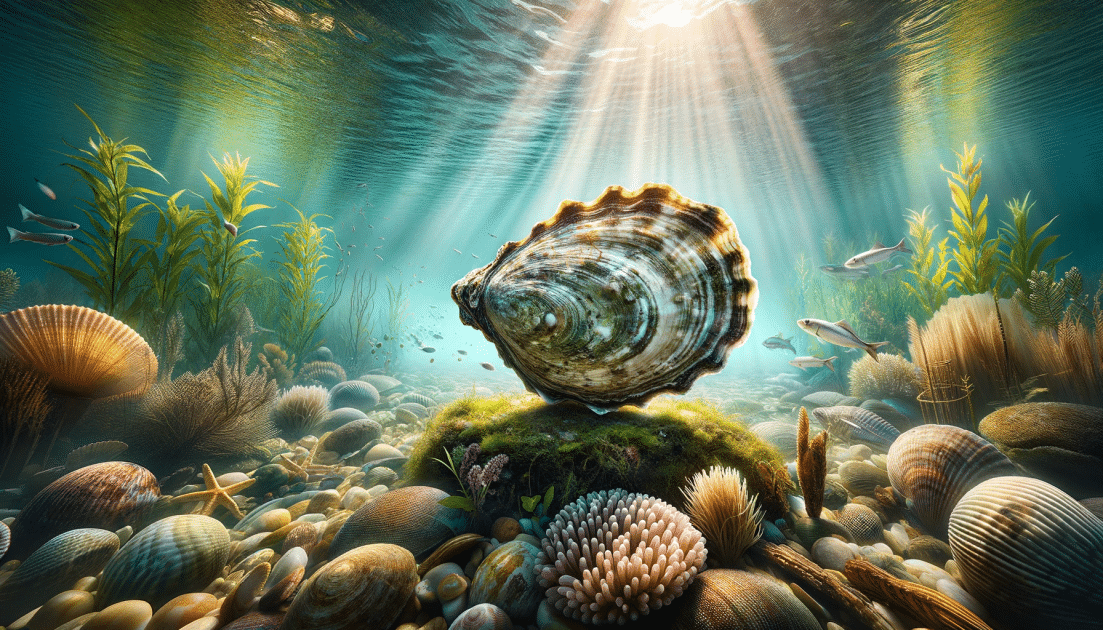Introduction: Exploring the Anatomy of an Oyster
- The Fascination with Oyster Anatomy
- Overview of Oyster Biology and Anatomy
- The Shell: A Key Component in the Anatomy of an Oyster
- Mantle: Understanding its Role in Oyster Anatomy
- Gills and Feeding: Essential Aspects of Oyster Anatomy
- The Digestive System in Oysters
- Circulatory System: A Vital Part of Oyster Anatomy
- Reproduction: A Critical Aspect of Oyster Anatomy
- Sensory and Nervous Systems in Oysters
- Conclusion: The Intricacy and Importance of Oyster Anatomy
The Fascination with Oyster Anatomy
Oysters, a staple in seafood cuisine, are not just a treat for the palate but also a subject of immense biological interest. Delving into the “anatomy of an oyster” reveals a complex structure, finely tuned to its aquatic environment. This blog post will explore the various facets of oyster anatomy, from its sturdy shell to its intricate internal systems. Understanding the anatomy of an oyster is not only fascinating for marine biologists but also crucial for environmentalists and conservationists who strive to protect these vital marine organisms and their habitats.
Overview of Oyster Biology and Anatomy
Oysters are more than just shellfish; they are an integral part of marine ecosystems. Their anatomy, optimized for life in tidal waters, involves a range of specialized adaptations. This exploration into the anatomy of an oyster will cover its external and internal structures, shedding light on how these features contribute to the oyster’s survival and ecological role. As we delve into the anatomy of an oyster, we unveil the intricacies of its biological makeup and its importance in maintaining the balance of our oceanic ecosystems.
Key Anatomical Features of Oysters:
- Shell: Two-part structure providing protection.
- Mantle: Tissue lining the shell, responsible for shell formation.
- Gills: Used for respiration and filter-feeding.
- Heart: Simple two-chambered organ for blood circulation.
- Digestive System: Includes the mouth, stomach, and intestines.
- Nervous System: Basic nerve ganglia and sensory cells.
- Reproductive Organs: Gonads responsible for spawning.
The Shell: A Key Component in the Anatomy of an Oyster
Composition and Structure
The shell is arguably the most recognized feature in the anatomy of an oyster. Comprised mainly of calcium carbonate, it provides a sturdy defense against predators and environmental pressures. The anatomy of an oyster shell is a two-part structure, each called a valve, connected by a flexible ligament allowing the oyster to open and close. This functionality is essential for feeding and respiration, highlighting the shell’s role beyond mere protection.
The Materials That Constitute the Shell
The shell’s composition is primarily calcium carbonate in the form of calcite or aragonite crystals. These materials, combined with a protein matrix, give the shell its strength and resilience. The constant deposition of these materials allows the shell to grow and repair itself, an ongoing process that is vital for the oyster’s survival.
The Design and Functionality of the Two-Part Shell
The bilateral symmetry and the hinged design of an oyster shell are marvels of natural engineering. This design allows for an effective seal, conserving moisture and protecting the soft body of the oyster inside. The muscle attached to both shells, known as the adductor muscle, controls the opening and closing, playing a crucial role in the oyster’s ability to feed and defend itself.
Shell Growth and Development
How Oysters Grow Their Shells
Growth in an oyster shell is an indicator of the oyster’s age and the environmental conditions it has endured. Growth rings, similar to those in a tree trunk, can be observed on the shell. These rings provide valuable information to scientists about the age of the oyster and the environmental conditions, like water temperature and food availability, throughout its life.
The Significance of Growth Rings
The growth rings on an oyster shell are more than just markers of age; they are records of the oyster’s life and the environment it lived in. Analyzing these rings helps scientists understand historical marine conditions and how environmental changes affect marine life. This aspect of oyster anatomy is a critical tool in marine research, offering insights into past and present ocean health.

Mantle: Understanding its Role in Oyster Anatomy
Mantle Function in Shell Formation
A critical element in the anatomy of an oyster is its mantle, the soft tissue that lines the inner surface of the shell. This remarkable organ plays a pivotal role in shell formation and maintenance. The mantle secretes the calcium carbonate and proteins that form the shell, a continuous process that allows the oyster to grow and repair its protective exterior. This function is essential for the oyster’s survival, making the mantle a key focus in the study of oyster anatomy.
Mantle Structure and Location
The mantle’s structure is specially adapted for its role in the oyster’s life. Comprising of numerous glands capable of secreting shell-forming materials, it is a perfect example of the specialized anatomy of an oyster. The mantle envelops the oyster’s body, creating a protective barrier between the soft tissues and the hard shell. Its location and structure are vital for the oyster’s growth and defense, highlighting the importance of the mantle in the overall anatomy of an oyster.
Comparative Anatomy: Oysters vs. Other Bivalves:
- Shell Shape: Oysters have irregular shapes, while clams and mussels are more symmetrical.
- Mobility: Oysters are mostly sessile; clams and mussels can move to some extent.
- Gill Structure: Oysters have highly efficient gills for filter-feeding compared to some other bivalves.

Gills and Feeding: Essential Aspects of Oyster Anatomy
Gill Structure and Respiration
The gills are among the most fascinating aspects of the anatomy of an oyster. They serve a dual purpose: respiration and feeding. Structurally, oyster gills are composed of thin, flat filaments that provide a large surface area for gas exchange. This design enables efficient oxygen uptake from the water, a crucial process for the oyster’s survival. The functionality of these gills is a testament to the adaptive nature of oyster anatomy, allowing them to thrive in their underwater habitats.
The Filter-Feeding Mechanism
Apart from respiration, the gills play a central role in the oyster’s filter-feeding mechanism. Oysters draw water into their shells, where the gills trap and filter out plankton and organic particles. This process not only feeds the oyster but also significantly contributes to maintaining the clarity and quality of the marine environment. The efficiency of this system is a key aspect of the anatomy of an oyster, highlighting its ecological importance as a natural water filter.
How Oysters Filter and Ingest Food
Understanding the filter-feeding process is crucial in studying the anatomy of an oyster. Water enters the oyster’s shell, passing through the gill filaments, where food particles are trapped and then transported to the mouth. This efficient feeding strategy underscores the oyster’s role in the ecosystem, where it filters and purifies large volumes of water, thereby supporting the health of marine life around it.
Microscopic Anatomy of Oysters:
- Gill Filaments: Microscopic structure for efficient water filtration.
- Mantle Cells: Specialized cells for secreting shell materials.
- Shell Layers: Detailed structure of crystalline calcium carbonate.
The Digestive System in Oysters
Digestive Components and Their Functions
The digestive system is a vital component in the anatomy of an oyster. It begins with the mouth, located at the base of the gills, where filtered food particles are ingested. The stomach, a central part of the digestive tract, efficiently processes the food. This system is complemented by intestines, where nutrients are absorbed, fueling the oyster’s growth and bodily functions. The specialization of this system reflects the oyster’s adaptation to its filter-feeding lifestyle, marking a significant aspect of its anatomy.
Food Processing and Nutrient Absorption
Once food particles enter the mouth, they are transported to the oyster’s stomach. Here, digestive enzymes break down the food, allowing the extraction of vital nutrients. The intestines then absorb these nutrients, providing energy and sustenance to the oyster. This process showcases the efficiency of the oyster’s digestive system, a crucial part of the anatomy of an oyster, which enables it to thrive in various marine environments.
Circulatory System: A Vital Part of Oyster Anatomy
Heart Structure and Function
The heart in the anatomy of an oyster, though simple, is fundamental to its survival. It consists of two chambers – a ventricle and two auricles – which pump blood throughout the body. The heart’s function is to circulate oxygenated blood from the gills to the rest of the body, supplying essential nutrients to various tissues. This circulatory system, while basic compared to more complex organisms, is perfectly tailored to the oyster’s sedentary lifestyle.
Blood Circulation in Oysters
Blood circulation is integral to the anatomy of an oyster. The oyster’s blood, which carries oxygen and nutrients, flows from the gills to the heart and is then pumped to the rest of the body. This system supports the oyster’s physiological processes, including growth and response to environmental stimuli. The simplicity of the oyster’s circulatory system is a prime example of how these creatures are finely adapted to their ecological niche, highlighting the intricate balance within their anatomy.
Reproduction: A Critical Aspect of Oyster Anatomy
Reproductive Organs and Functions
Reproduction is a vital and fascinating part of the anatomy of an oyster. Oysters are known for their unique reproductive abilities, including the capability of some species to change sex from male to female, or vice versa, depending on environmental conditions. Their reproductive organs, which are highly efficient, play a crucial role in spawning. During the reproductive season, oysters release large quantities of eggs or sperm into the water, a process vital for the continuation of the species.
The Spawning Process (Oyster Anatomy)
The spawning process is a key event in the life cycle of an oyster. Triggered by environmental factors such as water temperature and salinity, spawning involves the release of eggs and sperm into the surrounding water. This method of external fertilization is common among many marine species and is crucial for genetic diversity. The success of this process is important not only for the proliferation of oyster populations but also for maintaining the health of marine ecosystems where oysters serve as a critical component.
Sensory and Nervous Systems in Oysters
Sensory Responses to Environmental Changes
Despite their lack of complex eyes and ears, oysters have a refined ability to sense changes in their environment, an important aspect of the anatomy of an oyster. They possess sensory cells, especially in their mantle and gills, that detect alterations in water temperature, salinity, and the presence of potential threats. These sensory adaptations enable oysters to respond effectively to environmental changes, ensuring their survival in often fluctuating marine habitats.
The Simple Nervous System (Oyster Anatomy)
The oyster’s nervous system, while not as complex as in higher organisms, is perfectly suited to its needs. Comprising a series of nerve ganglia and connective tissues, it coordinates the oyster’s responses to sensory stimuli. This includes the opening and closing of the shell, a critical defensive mechanism. The simplicity of this system is a testament to the efficiency of the anatomy of an oyster, reflecting their evolutionarily optimized design for life in marine environments.
Conclusion: The Intricacy and Importance of Oyster Anatomy
Summarizing Oyster Anatomy
Our journey through the anatomy of an oyster reveals a world of remarkable complexity and specialization. From the sturdy architecture of their shells to the sophistication of their feeding and reproductive systems, oysters are a testament to the wonders of marine biology. Each aspect of their anatomy is intricately designed for survival and adaptation to their aquatic environment. This exploration underscores not only the biological intrigue of oysters but also their ecological importance.
The Ecological and Biological Significance
The study of the anatomy of an oyster extends beyond academic interest; it has profound implications for environmental conservation and marine health. Oysters play a crucial role in their ecosystems, from filtering and purifying water to providing habitats for other marine organisms. Understanding their anatomy and life processes is key to appreciating their role in maintaining the balance of marine ecosystems. As we continue to face environmental challenges, the significance of oysters and the need to protect them becomes increasingly clear. The anatomy of an oyster is not just a subject for textbooks; it’s a narrative of resilience, adaptability, and ecological interdependence.
Evolutionary Adaptations in Oyster Anatomy:
- Hinged Shell: Allows for efficient opening and closing.
- Specialized Gills: Adapted for highly effective filter-feeding.
- Sessile Lifestyle: Anatomy adapted for a stationary life, attaching to surfaces.
Glossary of Anatomical Terms:
- Bivalve: A mollusk with a body enclosed by a hinged shell.
- Sessile: Permanently attached to a surface; not free-moving.
- Filter-Feeding: A method of feeding where water is filtered to extract food particles.
- Gonads: Organs responsible for producing eggs or sperm.
- Calcium Carbonate: A chemical compound that forms the shell.
References
Each of these sources provides in-depth information and would be valuable for readers seeking additional reading on oyster anatomy.
- Global Seafoods – The Anatomy of an Oyster: This article covers various aspects of oyster anatomy, including the mantle, gills, digestive system, and general FAQs about oysters. It’s a comprehensive guide for understanding the complex structure of oysters.
- Mass Oyster Project – Oyster Anatomy: This reference provides insights into the simple anatomy of oysters, their feeding habits, the ecological role they play in preventing algal blooms, and their waste management process.
- France Naissain – The Anatomy of the Oyster: This page offers detailed information about the mantle, hinge, gills, and reproductive aspects of oysters. It also delves into the sequential hermaphroditism of oysters and factors influencing their reproduction.
- Hama Hama Oyster Company – Oyster Anatomy: A high-level overview of oyster anatomy essential for understanding the shucking process. It describes the two types of shells, the hinge, umbo, adductor muscle, mantle, and gills of oysters.
- Maryland Sea Grant – Oyster Internal Anatomy: This source offers a detailed exploration of the oyster’s internal anatomy, including the mantle, tentacles, gills, adductor muscle, heart, and digestive system.
- Maryland Sea Grant – Oyster External Anatomy: This article focuses on the external anatomy of oysters, discussing the different valves, the anterior and posterior ends, height, and other external features.

